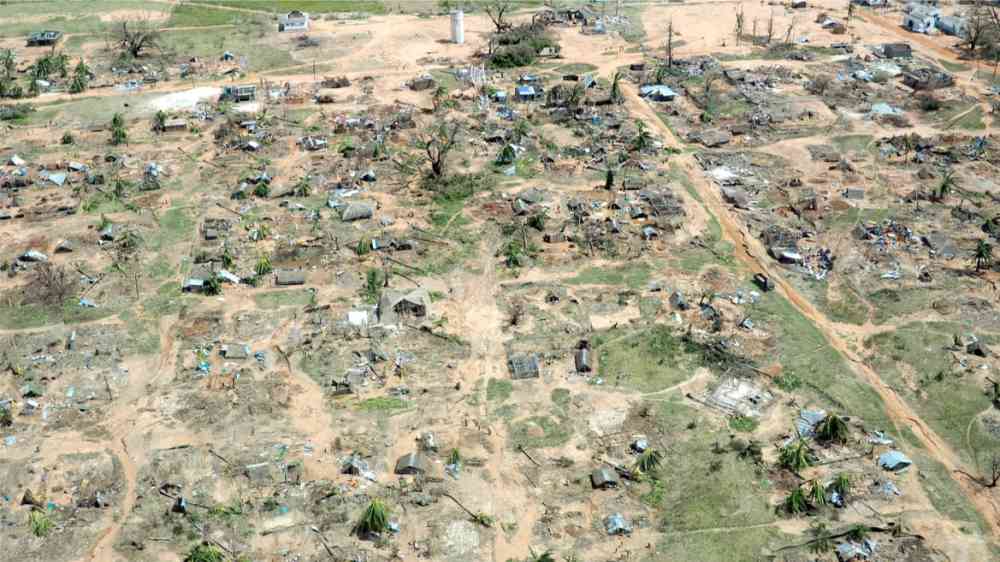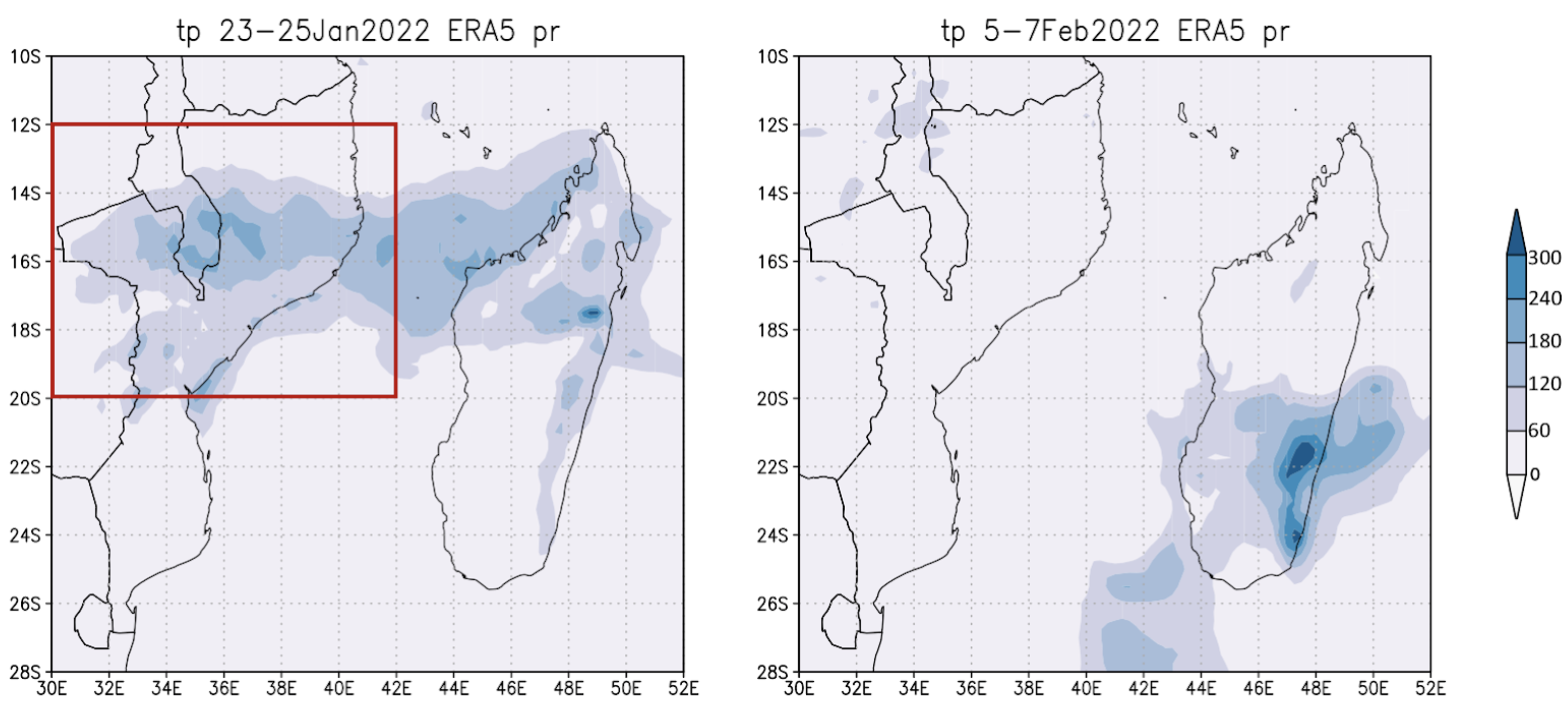Climate change increased rainfall associated with tropical cyclones hitting highly vulnerable communities in Madagascar, Mozambique & Malawi

Madagascar, Mozambique, Malawi and neighbouring countries suffered severe flooding after a series of tropical storms, including three cyclones, hit the region, starting with storms Ana and Batsirai in January and February 2022.
Tropical Storm Ana in late January 2022 brought winds, heavy rains, damage and destruction to parts of Madagascar, Mozambique, Malawi and Zimbabwe. Ana was followed by Tropical Cyclone Batsirai hitting the South coast of Madagascar on February the 5th 2022. Ana and Batsirai were the first storms of the 2021-22 Southwest Indian Ocean cyclone season (November-April). Following those two events two more tropical cyclones and another storm also made landfall leading to further flooding and increasing the number of people affected and casualties.
Both Ana and Batsirai caused severe humanitarian impacts in Madagascar, Mozambique, and Malawi including deaths and injuries, infrastructure damage, and a range of long-lasting socio-economic impacts which may become even more apparent as the recovery process begins. Most of these impacts were driven by the amount of rain and flooding brought by these two systems.

Scientists from Mozambique, South Africa, Madagascar, New Zealand, India, the Netherlands, France, United States of America and the United Kingdom, collaborated to assess to what extent human-induced climate change altered the likelihood and intensity of the heavy rainfall associated with the cyclones.
Using published peer-reviewed methods, we analysed how human-induced climate change affected the 3-day average annual maximum rainfall in the regions worst hit by Ana and Batsirai.
Main findings
- Most impacts were caused by flooding. We therefore assess rainfall associated with tropical storms, measured as the 3-day annual maximum. A measure which is short enough to exclude rainfall from other events that occur close to the event in question but long enough to encompass the full impacts.
- Madagascar, Malawi and Mozambique all had experienced flooding in the weeks preceding Ana, and the communities affected by those floods were left extremely vulnerable to any other hazard, in particular one that compounded the existing flood situations – consecutive tropical storms do not allow people to recover before another one hits. Underlying conditions of conflict (northern Mozambique) and drought (southern Madagascar) likely increased vulnerability. Madagascar is currently grappling with an extreme food insecurity situation, driven by a range of socio-economic conditions and a prolonged drought.
- Both, tropical storm Ana and cyclone Batsirai were well forecasted and tracked notably by Météo Madagascar and the Regional Specialised Meteorological Centre. However, the existence of warnings does not guarantee that these warnings are received and acted upon. In some areas, the damage to communication structures and electrical grids has hampered the reception of the warnings.
- From a meteorological perspective the event (defined in this instance as max. 3-day average rainfall) was only extreme for the first cyclone, Ana, with a return period of approx. 1 in 50 years over Malawi & Mozambique. Batsirai was not a rare event with one of approx. 1 in 2 years over Madagascar.
- Observations of rainfall in the region are sparse and contain many instances of missing data, a quantitative assessment of trends is therefore fraught with uncertainties. Qualitatively, however, in particular taking the longer time series into account, an increase in the likelihood and intensity of heavy rainfall as associated with these tropical cyclones can be observed.
- To determine the role of climate change in these observed changes, we combine observations with climate models. We conclude that greenhouse gas and aerosol emissions are in part responsible for the observed increases.
- These findings are consistent with future projections of heavy rainfall associated with tropical cyclones, corroborating the attribution finding that climate change indeed increased the likelihood and intensity of the rainfall associated with Ana and Batsirai.